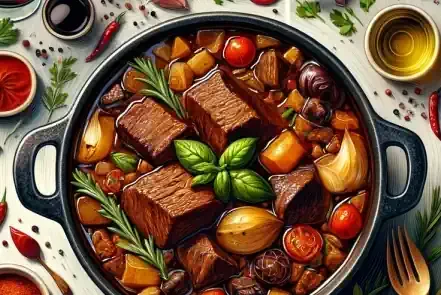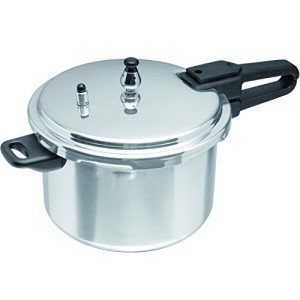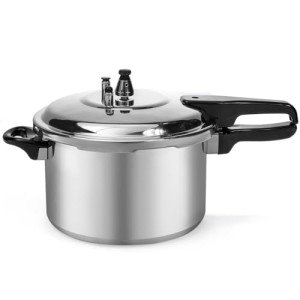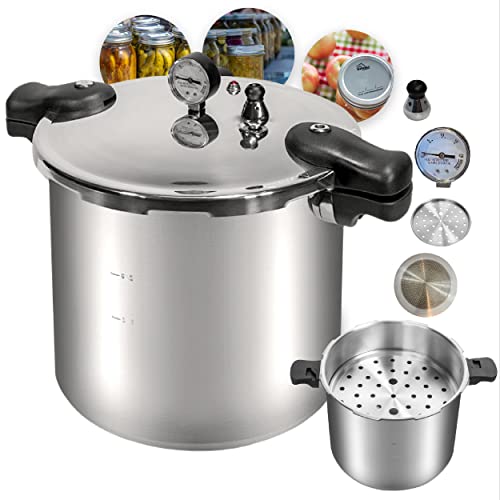Mediterranean-Style Beef Stew: The Recipe
The Mediterranean diet is celebrated worldwide for its delicious flavors and health benefits. Rich in vegetables, fruits, herbs, and lean proteins, it embodies a way of eating that is both nutritious and full of culinary delight. One dish that wonderfully captures this essence is the Mediterranean-Style Beef Stew, a vibrant and savory meal that incorporates the bold flavors of olives, sun-dried tomatoes, and aromatic herbs.
Ingredients:
2 lbs beef chuck, cut into 1-inch cubes
2 tablespoons olive oil
1 large onion, chopped
3 cloves garlic, minced
1 cup sun-dried tomatoes, chopped
1 cup green olives, pitted
2 carrots, diced
2 stalks celery, diced
1 can (14 oz) diced tomatoes
2 cups beef broth
1 cup red wine (optional)
1 tablespoon fresh rosemary, chopped
1 tablespoon fresh thyme, chopped
Salt and pepper, to taste
2 bay leaves
Zest of 1 lemon, for garnish
Fresh parsley, chopped, for garnish
Instructions:
Brown the Beef: Heat the olive oil in a large pot over medium-high heat. Season the beef cubes with salt and pepper, then brown them in batches. Remove the beef and set aside.
Sauté the Aromatics: In the same pot, add the onion and garlic, cooking until they're soft and fragrant.
Build the Stew: Return the beef to the pot along with the sun-dried tomatoes, olives, carrots, celery, diced tomatoes, beef broth, and red wine if using. Stir in the rosemary, thyme, and bay leaves.
Simmer: Bring the stew to a boil, then reduce the heat to low. Cover and simmer for about 1.5 to 2 hours, or until the beef is tender.
Finish and Serve: Discard the bay leaves. Check the seasoning and adjust with salt and pepper as needed. Garnish with lemon zest and fresh parsley before serving.
This stew is not just a meal; it's an experience. The combination of sun-dried tomatoes and green olives brings a tangy richness that is perfectly balanced by the freshness of the herbs. The lemon zest adds a bright note at the end, lifting the stew with its citrus aroma.
Serve this stew over a bed of couscous or with crusty bread to soak up the delightful sauce. It's perfect for a cozy night in or a special dinner with friends and family. The stew's vibrant colors and rich flavors are sure to impress, making every bite a testament to the beauty and simplicity of Mediterranean cooking.
Mediterranean-Style Beef Stew: A Symphony of Flavors
Embrace the flavors of the Mediterranean with this delectable beef stew. It's a dish that brings the warmth and joy of Mediterranean kitchens into your home, offering a delicious way to gather around the table and enjoy good food with loved ones.
Overview of Mediterranean Cuisine
Mediterranean cuisine is renowned worldwide for its vibrant flavors, fresh ingredients, and rich culinary history. Stretching across countries bordering the Mediterranean Sea, this gastronomic tradition encompasses diverse cultures, each contributing its unique ingredients and cooking techniques. From the sun-kissed coasts of Italy to the aromatic spice markets of Morocco, Mediterranean cuisine reflects the region's bountiful harvests, centuries-old traditions, and cultural exchanges.
Exploring the Culinary Diversity
One of the most fascinating aspects of Mediterranean cuisine is its remarkable diversity. In Italy, pasta and tomatoes take center stage, while Greece celebrates the simplicity of olive oil, feta cheese, and seafood. Spain's culinary landscape is a tapestry of flavors, from the savory paella to the fiery chorizo. Meanwhile, Moroccan cuisine entices with its exotic spices, couscous, and slow-cooked tagines. This section will delve into the distinctive characteristics of each Mediterranean country's cuisine, highlighting their unique contributions to the culinary mosaic of the region.
The Allure of Mediterranean-Style Beef Stew
Among the myriad dishes that epitomize Mediterranean cuisine, beef stew stands out as a comforting and hearty classic. With its tender chunks of beef, aromatic herbs, and flavorful tomato broth, Mediterranean-style beef stew embodies the essence of the region's culinary ethos. This article will explore the allure of Mediterranean-style beef stew, offering insights into its ingredients, preparation techniques, and cultural significance. Join us on a gastronomic journey through the Mediterranean, where every spoonful of stew tells a story of tradition, flavor, and shared culinary heritage.
Exploring Mediterranean Cuisine
Characteristics of Mediterranean Cuisine
Mediterranean cuisine is characterized by its emphasis on fresh, seasonal ingredients and simple cooking methods that allow the natural flavors to shine. Olive oil, an essential component of Mediterranean cooking, adds a distinctive richness and depth to dishes while providing health benefits. Herbs such as basil, oregano, and rosemary impart freshness and aroma to Mediterranean dishes, enhancing their flavor profile. Additionally, an abundance of fruits, vegetables, legumes, and seafood forms the cornerstone of this cuisine, providing a wealth of nutrients and vibrant colors to meals.
Diversity of Culinary Traditions
The Mediterranean region boasts a rich tapestry of culinary traditions shaped by centuries of cultural exchange and geographical diversity. Italian cuisine, with its love affair with pasta, pizza, and fresh produce, showcases the Mediterranean's agricultural bounty. Greek cuisine celebrates simplicity and balance, with dishes like moussaka, souvlaki, and tzatziki highlighting the region's reliance on wholesome ingredients and bold flavors. Spanish cuisine, influenced by Moorish, Jewish, and Christian culinary traditions, offers a tantalizing array of dishes, from tapas to paella, showcasing the country's culinary heritage. Meanwhile, Moroccan cuisine dazzles with its aromatic spices, slow-cooked tagines, and couscous, reflecting the country's North African roots and Arab influences.
Health Benefits of the Mediterranean Diet
The Mediterranean diet, centered around plant-based foods, olive oil, and moderate consumption of fish, poultry, and dairy, has long been hailed for its numerous health benefits. Studies have shown that adhering to a Mediterranean diet may lower the risk of heart disease, stroke, and certain cancers, thanks to its emphasis on whole grains, fruits, vegetables, and lean proteins. Additionally, the consumption of olive oil, rich in monounsaturated fats and antioxidants, is associated with improved cardiovascular health and longevity. This section will delve into the science behind the Mediterranean diet's health benefits and provide practical tips for incorporating its principles into everyday meals.
The Essence of Beef Stew
Defining the Classic Beef Stew
Beef stew is a timeless and beloved dish found in culinary traditions around the world. At its core, beef stew consists of tender chunks of beef simmered slowly with vegetables and aromatic herbs in a flavorful broth. This hearty dish has roots in peasant cooking, where tough cuts of meat were transformed into meltingly tender morsels through long, slow cooking methods. Whether it's a French boeuf bourguignon, an Irish Guinness stew, or an American beef pot roast, beef stew holds a special place in the hearts and stomachs of people everywhere.
Variations of Beef Stew Across Cultures
While the basic concept of beef stew remains consistent, its ingredients and flavor profiles vary widely across different cultures. In France, boeuf bourguignon is renowned for its rich red wine sauce infused with garlic, onions, and mushrooms. In Ireland, Guinness stew features hearty root vegetables and a deep, robust gravy made with Ireland's famous stout beer. In America, beef pot roast is a comforting classic, often flavored with aromatic herbs like thyme and rosemary and served with creamy mashed potatoes.
Infusing Mediterranean Flavors into Beef Stew
Mediterranean-style beef stew takes the classic dish to new heights by incorporating the region's signature ingredients and flavors. Instead of the traditional beef broth base, Mediterranean-style beef stew often features a tomato-based broth enriched with garlic, onions, and aromatic herbs like oregano, thyme, and rosemary. Olives, capers, and citrus zest add a bright, tangy note to the stew, while red wine or balsamic vinegar provide depth and complexity. The result is a harmonious blend of flavors that evokes the sun-drenched shores and vibrant markets of the Mediterranean. In the following sections, we'll explore the key ingredients, cooking techniques, and regional variations that make Mediterranean-style beef stew a culinary masterpiece.
Ingredients Spotlight
Key Ingredients for Mediterranean-Style Beef Stew
The foundation of any great Mediterranean-style beef stew lies in its key ingredients, each carefully selected to impart depth, richness, and complexity to the dish. High-quality beef, preferably cuts like chuck or brisket, provides the stew with its hearty base and succulent texture. Fresh tomatoes, either diced or crushed, form the flavorful backdrop of the stew's broth, infusing it with their natural sweetness and acidity. Aromatics such as garlic and onions add layers of savory depth, while olives, capers, and citrus zest contribute bright, tangy notes that balance the richness of the stew. Fragrant herbs like rosemary, thyme, and oregano are essential for infusing the stew with the aromatic flavors of the Mediterranean.
Importance of Using Fresh, Quality Ingredients
When preparing Mediterranean-style beef stew, the quality of the ingredients used can make all the difference in the final outcome. Opting for fresh, locally sourced ingredients whenever possible ensures that the stew is bursting with vibrant flavors and nutrients. Look for ripe, juicy tomatoes, fragrant herbs, and flavorful olives to maximize the stew's taste and aroma. When selecting beef, choose well-marbled cuts with ample intramuscular fat, as these will become tender and juicy when slow-cooked. While it may be tempting to take shortcuts with canned or pre-packaged ingredients, investing in high-quality, whole foods is key to creating a truly exceptional stew.
Tips for Sourcing Ingredients and Possible Substitutes
While many of the ingredients for Mediterranean-style beef stew are readily available at grocery stores or markets, sourcing certain specialty items may require a bit of effort. For example, if fresh tomatoes are out of season, canned tomatoes can be used as a convenient substitute without sacrificing flavor. Similarly, if specific varieties of olives or herbs are unavailable, don't hesitate to experiment with alternatives that offer similar taste profiles. When selecting beef, consider consulting with your local butcher to choose the best cuts for stewing, as they can provide expert advice on the most flavorful and tender options available. By prioritizing fresh, quality ingredients and being flexible with substitutions when necessary, you can ensure that your Mediterranean-style beef stew is a culinary masterpiece worthy of applause.
The Art of Flavor Layering
Exploring the Technique of Layering Flavors in Mediterranean Cooking
At the heart of Mediterranean cuisine lies the art of flavor layering, a culinary technique that involves building depth and complexity by incorporating ingredients in strategic stages of cooking. This approach allows each component to impart its unique flavors and aromas, resulting in a harmonious and well-balanced dish. In Mediterranean-style beef stew, flavor layering begins with the initial searing of the beef, which caramelizes the exterior and creates a rich, savory fond that enhances the stew's depth of flavor. Aromatics like garlic and onions are then sautéed until golden and fragrant, infusing the stew with their savory sweetness. Next, tomatoes, herbs, and other seasonings are added to the pot, where they simmer and meld together, creating a robust broth that forms the backbone of the stew's flavor profile. Finally, finishing touches such as olives, capers, and citrus zest are added just before serving, brightening the stew with their tangy acidity and aromatic notes. By mastering the art of flavor layering, you can elevate your Mediterranean-style beef stew to new heights of culinary excellence.
Techniques Such as Searing Meat, Caramelizing Onions, and Deglazing with Wine
Several key techniques are essential for achieving optimal flavor layering in Mediterranean-style beef stew. Searing the meat before simmering caramelizes its surface, creating a rich, savory crust that adds depth and complexity to the stew. Similarly, caramelizing onions and garlic in the same pot used for searing the meat infuses the stew with their sweet, savory flavors, while deglazing the pan with wine or broth releases any flavorful browned bits stuck to the bottom, further enriching the stew's broth. These techniques, when executed with care and precision, ensure that each layer of flavor is fully developed and balanced, resulting in a stew that is as delicious as it is satisfying.
Utilizing Herbs and Spices to Enhance Flavor Profiles
Herbs and spices play a crucial role in enhancing the flavor profile of Mediterranean-style beef stew, infusing it with their aromatic complexity and subtle nuances. Fragrant herbs like rosemary, thyme, and oregano are classic choices for Mediterranean cooking, adding earthy, floral notes that complement the richness of the beef and tomatoes. Spices such as paprika, cumin, and cinnamon can also be used to add warmth and depth to the stew, imparting a hint of exotic spice that elevates its flavor profile. When using herbs and spices, it's important to balance their flavors judiciously, adding them gradually and adjusting to taste as needed. With the right combination of herbs and spices, you can transform your Mediterranean-style beef stew into a culinary masterpiece that delights the senses and transports you to the sun-drenched shores of the Mediterranean.
Regional Variations
Unique Spins on Beef Stew in Different Mediterranean Countries
Across the Mediterranean region, beef stew takes on a variety of unique and delicious forms, each reflecting the culinary traditions and ingredients of its respective country. In Italy, for example, beef stew often incorporates tomatoes, garlic, and aromatic herbs like rosemary and sage, resulting in a rich and flavorful dish known as "spezzatino di manzo." In Greece, beef stew, or "kokkinisto," is typically cooked with tomatoes, onions, and cinnamon, giving it a subtly sweet and aromatic flavor profile. Meanwhile, in Spain, "estofado de carne" features tender chunks of beef simmered with onions, peppers, and paprika, resulting in a hearty and satisfying stew with a smoky, spicy kick. Finally, in Morocco, beef stew, or "tagine," is slow-cooked with a tantalizing blend of spices, dried fruits, and preserved lemons, creating a fragrant and complex dish that's as comforting as it is exotic. By exploring these regional variations, you can discover the diverse and delicious world of Mediterranean-style beef stew.
Examples of Regional Variations: Italian Beef Ragu, Greek Stifado, Moroccan Tagine
Italian beef ragu is a hearty and flavorful dish made with tender chunks of beef simmered in a rich tomato sauce until meltingly tender. Infused with garlic, onions, and aromatic herbs like rosemary and thyme, this classic Italian stew is a comforting and satisfying meal that's perfect for chilly nights. Greek stifado is a traditional beef stew made with onions, tomatoes, and aromatic spices like cinnamon and cloves, giving it a subtly sweet and fragrant flavor profile. Slow-cooked until the meat is tender and falling apart, stifado is often served over a bed of fluffy rice or creamy mashed potatoes, making it a hearty and satisfying meal that's sure to warm you from the inside out. Moroccan tagine is a fragrant and flavorful stew made with tender chunks of beef, sweet dried fruits, and aromatic spices like cumin, coriander, and cinnamon. Slow-cooked in a traditional clay pot called a tagine, this Moroccan specialty is a feast for the senses, with its rich and complex flavors and tender, succulent meat. Whether you're craving the comfort of Italian beef ragu, the warmth of Greek stifado, or the exotic flavors of Moroccan tagine, there's a regional variation of Mediterranean-style beef stew to suit every taste and occasion.
Cultural Significance and History Behind Each Variation
Beyond their delicious flavors and hearty textures, regional variations of Mediterranean-style beef stew carry deep cultural significance and historical significance. In Italy, for example, beef ragu is a beloved family dish that's often passed down through generations, with each family adding its own unique twist to the recipe. In Greece, stifado is a traditional dish served during holidays and special occasions, symbolizing warmth, hospitality, and the joys of gathering with loved ones. In Morocco, tagine is a staple of Moroccan cuisine, with each region and family boasting its own special recipe, passed down from mother to daughter for centuries. By exploring the cultural significance and history behind each variation of Mediterranean-style beef stew, you can gain a deeper appreciation for the rich and diverse culinary traditions of the Mediterranean region.
Cooking Methodology
Step-by-Step Process of Preparing Mediterranean-Style Beef Stew
Preparing Mediterranean-style beef stew is a labor of love that requires patience, attention to detail, and a few key cooking techniques to achieve optimal results. The process typically begins with searing the beef in a hot pan until browned on all sides, which helps to develop rich flavor compounds through the Maillard reaction. Next, aromatics such as onions, garlic, and herbs are sautéed until fragrant, adding depth and complexity to the stew's flavor profile. Tomatoes, broth, and other liquid ingredients are then added to the pot, along with any additional seasonings or spices, before simmering the stew over low heat for several hours until the beef is tender and the flavors have melded together. Finally, the stew is served hot, garnished with fresh herbs or other finishing touches to enhance its visual appeal and flavor. By following this step-by-step process, you can create a mouthwatering Mediterranean-style beef stew that's sure to impress even the most discerning palates.
Essential Techniques: Browning Meat, Sautéing Aromatics, Slow Simmering
Several essential cooking techniques are integral to the preparation of Mediterranean-style beef stew, each playing a crucial role in developing its rich, complex flavors and tender texture. Browning the meat before simmering caramelizes its surface, creating flavorful crusts that add depth and complexity to the stew. Sautéing aromatics such as onions, garlic, and herbs in the same pot used for searing the meat infuses the stew with their savory sweetness and aromatic complexity. Slow simmering the stew over low heat for several hours allows the flavors to meld together and the beef to become meltingly tender, resulting in a dish that's rich, hearty, and deeply satisfying. By mastering these essential techniques, you can ensure that your Mediterranean-style beef stew is bursting with flavor and perfectly cooked every time.
Tips for Achieving Ideal Consistency and Flavor Balance
Achieving the ideal consistency and flavor balance in Mediterranean-style beef stew requires careful attention to detail and a few simple tips and tricks. To ensure that the stew has a rich, hearty texture, be sure to use well-marbled cuts of beef and simmer the stew over low heat for several hours until the meat is fork-tender and the flavors have melded together. Taste the stew periodically as it cooks, adjusting the seasonings as needed to achieve the perfect balance of flavors. If the stew becomes too thick, simply add a bit of broth or water to thin it out to your desired consistency. Similarly, if the flavors are too intense, you can mellow them out by adding a splash of vinegar or citrus juice to brighten the stew's overall flavor profile. With a little patience and attention to detail, you can create a Mediterranean-style beef stew that's perfectly balanced, richly flavored, and sure to become a family favorite.
Serving Suggestions
Pairing Options: Crusty Bread, Rice, Couscous, or Polenta
When it comes to serving Mediterranean-style beef stew, there are countless delicious pairing options that complement its rich, hearty flavors. Crusty bread, such as a rustic baguette or ciabatta, is perfect for soaking up the stew's flavorful broth and adds a satisfying textural contrast to each bite. Alternatively, serving the stew over a bed of fluffy rice, couscous, or creamy polenta provides a hearty and satisfying base that helps to soak up the stew's delicious sauce and ensures that no drop goes to waste. Whether you prefer the rustic simplicity of bread or the comforting warmth of grains, there's a perfect pairing option to suit every taste and occasion.
Complementary Side Dishes and Accompaniments Like Greek Salad or Roasted Vegetables
In addition to serving Mediterranean-style beef stew with bread, rice, couscous, or polenta, there are a variety of complementary side dishes and accompaniments that can elevate the meal to new heights of flavor and satisfaction. A crisp, refreshing Greek salad made with ripe tomatoes, crisp cucumbers, tangy feta cheese, and briny olives provides a bright and colorful counterpoint to the stew's rich, savory flavors. Similarly, serving the stew alongside a platter of roasted vegetables, such as carrots, potatoes, and bell peppers, adds a hearty and satisfying touch that's sure to please even the most discerning palates. By pairing Mediterranean-style beef stew with complementary side dishes and accompaniments, you can create a well-rounded and satisfying meal that's perfect for any occasion.
Garnishing and Presentation Ideas to Elevate the Dining Experience
To elevate the dining experience and add visual interest to your Mediterranean-style beef stew, consider garnishing it with a few simple finishing touches before serving. Fresh herbs such as parsley, cilantro, or basil add a pop of color and freshness to the stew's rich, savory flavors, while a drizzle of extra-virgin olive oil or a sprinkle of grated Parmesan cheese provides a luxurious finishing touch that enhances its overall richness and depth of flavor. For an extra-special presentation, consider serving the stew in individual ramekins or small bowls, garnished with a sprig of fresh herbs or a slice of crusty bread on the side. By paying attention to the details and adding a few thoughtful touches, you can transform your Mediterranean-style beef stew into a culinary masterpiece that's as beautiful to look at as it is delicious to eat.
Wine Pairing Recommendations
Suitable Wine Pairings to Enhance the Stew's Flavors
Pairing the right wine with Mediterranean-style beef stew can enhance the dining experience by complementing the stew's rich, hearty flavors and balancing its acidity and spice. Red wines with medium to full body and rich fruit flavors are typically the best match for beef stew, as they provide a lush backdrop that enhances the stew's savory notes. Italian wines such as Chianti or Sangiovese pair beautifully with Mediterranean-style beef stew, thanks to their bright acidity and cherry fruit flavors, which complement the stew's tomato-based sauce. Spanish wines like Tempranillo or Rioja also make excellent pairings, with their bold fruit flavors and spicy undertones adding depth and complexity to the stew's flavor profile. For a more adventurous pairing, consider a Greek Xinomavro or a Moroccan Syrah, both of which offer unique flavor profiles that complement the stew's Mediterranean spices and aromatics. By selecting the right wine to accompany your Mediterranean-style beef stew, you can elevate the dining experience and create a memorable meal that's sure to impress.
Examples: Italian Chianti, Spanish Rioja, Greek Xinomavro
Italian Chianti is a classic pairing for Mediterranean-style beef stew, thanks to its bright acidity, cherry fruit flavors, and earthy undertones, which complement the stew's rich, savory flavors and tomato-based sauce. Spanish Rioja is another excellent choice, with its bold fruit flavors, spicy oak notes, and smooth tannins adding depth and complexity to the stew's flavor profile. Greek Xinomavro, known for its high acidity, firm tannins, and complex earthy flavors, pairs beautifully with Mediterranean spices and aromatics, adding a unique twist to the stew's flavor profile. Whether you prefer the bright acidity of Chianti, the bold fruit flavors of Rioja, or the earthy complexity of Xinomavro, there's a perfect wine pairing to enhance your Mediterranean-style beef stew and elevate your dining experience to new heights of flavor and satisfaction.
Principles of Wine Pairing and Balancing Flavors Effectively
When pairing wine with Mediterranean-style beef stew, it's important to consider the stew's flavor profile and select a wine that complements its rich, hearty flavors while balancing its acidity and spice. Red wines with medium to full body and rich fruit flavors are typically the best match for beef stew, as they provide a lush backdrop that enhances the stew's savory notes. Look for wines with bright acidity and smooth tannins, as these qualities help to cut through the stew's richness and cleanse the palate between bites. Additionally, consider the wine's flavor profile and how it interacts with the stew's ingredients and seasonings. Wines with fruity, spicy, or earthy undertones can enhance the stew's flavor complexity and add depth to its overall profile. By selecting the right wine pairing and balancing flavors effectively, you can create a harmonious dining experience that delights the senses and leaves a lasting impression.
Conclusion Mediterranean-Style Beef Stew
Summary of the Culinary Journey Through Mediterranean-Style Beef Stew
Throughout this culinary exploration, we've embarked on a journey through the rich and diverse world of Mediterranean-style beef stew. From its humble beginnings as a peasant dish to its modern-day incarnation as a beloved comfort food, beef stew has captivated the hearts and palates of people around the world. We've delved into the essence of Mediterranean cuisine, with its emphasis on fresh, seasonal ingredients, and simple cooking techniques that allow the natural flavors to shine. We've explored the art of flavor layering, discovering how each ingredient contributes to the stew's depth and complexity. We've traveled across the Mediterranean region, sampling regional variations of beef stew that reflect the unique culinary traditions and ingredients of each country. We've mastered essential cooking techniques, learned how to achieve the ideal consistency and flavor balance, and discovered the perfect wine pairings to complement the stew's rich, hearty flavors. Along the way, we've uncovered the cultural significance and historical significance behind each variation of Mediterranean-style beef stew, gaining a deeper appreciation for the rich and diverse culinary traditions of the Mediterranean region.
Encouragement for Readers to Experiment With Their Own Variations
As our culinary journey comes to a close, I encourage you to take what you've learned and experiment with your own variations of Mediterranean-style beef stew. Don't be afraid to mix and match ingredients, swap out seasonings, or add your own unique twists to create a stew that's uniquely yours. Whether you prefer a classic Italian beef ragu, a Greek stifado, or a Moroccan tagine, the possibilities are endless when it comes to Mediterranean-style beef stew. So gather your ingredients, fire up the stove, and let your creativity run wild as you explore the delicious flavors and aromas of this timeless dish.
Invitation to Savor the Rich Flavors and Aromas of This Hearty Dish
In closing, I invite you to savor the rich flavors and aromas of Mediterranean-style beef stew, and to share it with your friends and family. Whether enjoyed on a cozy winter evening or served at a festive gathering, beef stew has a way of bringing people together and warming the soul. So gather your loved ones, pour a glass of wine, and indulge in the simple pleasures of good food and good company. From all of us here, thank you for joining us on this culinary journey, and may your kitchen always be filled with the tantalizing scents of Mediterranean-style beef stew. Buon appetito!







